The Atomic Human
Abstract
- Societal Norms: working in the age of Generative AI ▪ Impact on people function ▪ Tasking: Composition, performance, tracking
The Atomic Human


Figure: The Atomic Eye, by slicing away aspects of the human that we used to believe to be unique to us, but are now the preserve of the machine, we learn something about what it means to be human.
The development of what some are calling intelligence in machines, raises questions around what machine intelligence means for our intelligence. The idea of the atomic human is derived from Democritus’s atomism.
In the fifth century bce the Greek philosopher Democritus posed a similar question about our physical universe. He imagined cutting physical matter into pieces in a repeated process: cutting a piece, then taking one of the cut pieces and cutting it again so that each time it becomes smaller and smaller. Democritus believed this process had to stop somewhere, that we would be left with an indivisible piece. The Greek word for indivisible is atom, and so this theory was called atomism. This book considers this question, but in a different domain, asking: As the machine slices away portions of human capabilities, are we left with a kernel of humanity, an indivisible piece that can no longer be divided into parts? Or does the human disappear altogether? If we are left with something, then that uncuttable piece, a form of atomic human, would tell us something about our human spirit.
See Lawrence (2024) atomic human, the p. 13.
The Diving Bell and the Butterfly


Figure: The Diving Bell and the Buttefly is the autobiography of Jean Dominique Bauby.
The Diving Bell and the Butterfly is the autobiography of Jean Dominique Bauby. Jean Dominique, the editor of French Elle magazine, suffered a major stroke at the age of 43 in 1995. The stroke paralyzed him and rendered him speechless. He was only able to blink his left eyelid, he became a sufferer of locked in syndrome.
See Lawrence (2024) Le Scaphandre et le papillon (The Diving Bell and the Butterfly) p. 10–12.
O M D P C F B V
H G J Q Z Y X K W

Figure: The ordering of the letters that Bauby used for writing his autobiography.
How could he do that? Well, first, they set up a mechanism where he could scan across letters and blink at the letter he wanted to use. In this way, he was able to write each letter.
It took him 10 months of four hours a day to write the book. Each word took two minutes to write.
Imagine doing all that thinking, but so little speaking, having all those thoughts and so little ability to communicate.
One challenge for the atomic human is that we are all in that situation. While not as extreme as for Bauby, when we compare ourselves to the machine, we all have a locked-in intelligence.


Figure: Jean Dominique Bauby was the Editor in Chief of the French Elle Magazine, he suffered a stroke that destroyed his brainstem, leaving him only capable of moving one eye. Jean Dominique became a victim of locked in syndrome.
Incredibly, Jean Dominique wrote his book after he became locked in. It took him 10 months of four hours a day to write the book. Each word took two minutes to write.
The idea behind embodiment factors is that we are all in that situation. While not as extreme as for Bauby, we all have somewhat of a locked in intelligence.
See Lawrence (2024) Bauby, Jean Dominique p. 9–11, 18, 90, 99-101, 133, 186, 212–218, 234, 240, 251–257, 318, 368–369.
Bauby and Shannon

|

|

Figure: Claude Shannon developed information theory which allows us to quantify how much Bauby can communicate. This allows us to compare how locked in he is to us.
See Lawrence (2024) Shannon, Claude p. 10, 30, 61, 74, 98, 126, 134, 140, 143, 149, 260, 264, 269, 277, 315, 358, 363.
Embodiment Factors
| bits/min | billions | 2,000 |
|
billion calculations/s |
~100 | a billion |
| embodiment | 20 minutes | 5 billion years |

Figure: Embodiment factors are the ratio between our ability to compute and our ability to communicate. Relative to the machine we are also locked in. In the table we represent embodiment as the length of time it would take to communicate one second’s worth of computation. For computers it is a matter of minutes, but for a human, it is a matter of thousands of millions of years. See also “Living Together: Mind and Machine Intelligence” Lawrence (2017)
There is a fundamental limit placed on our intelligence based on our ability to communicate. Claude Shannon founded the field of information theory. The clever part of this theory is it allows us to separate our measurement of information from what the information pertains to.1
Shannon measured information in bits. One bit of information is the amount of information I pass to you when I give you the result of a coin toss. Shannon was also interested in the amount of information in the English language. He estimated that on average a word in the English language contains 12 bits of information.
Given typical speaking rates, that gives us an estimate of our ability to communicate of around 100 bits per second (Reed and Durlach, 1998). Computers on the other hand can communicate much more rapidly. Current wired network speeds are around a billion bits per second, ten million times faster.
When it comes to compute though, our best estimates indicate our computers are slower. A typical modern computer can process make around 100 billion floating-point operations per second, each floating-point operation involves a 64 bit number. So the computer is processing around 6,400 billion bits per second.
It’s difficult to get similar estimates for humans, but by some estimates the amount of compute we would require to simulate a human brain is equivalent to that in the UK’s fastest computer (Ananthanarayanan et al., 2009), the MET office machine in Exeter, which in 2018 ranked as the 11th fastest computer in the world. That machine simulates the world’s weather each morning, and then simulates the world’s climate in the afternoon. It is a 16-petaflop machine, processing around 1,000 trillion bits per second.
See Lawrence (2024) embodiment factor p. 13, 29, 35, 79, 87, 105, 197, 216-217, 249, 269, 353, 369.
Bandwidth Constrained Conversations

Figure: Conversation relies on internal models of other individuals.

Figure: Misunderstanding of context and who we are talking to leads to arguments.
Embodiment factors imply that, in our communication between humans, what is not said is, perhaps, more important than what is said. To communicate with each other we need to have a model of who each of us are.
To aid this, in society, we are required to perform roles. Whether as a parent, a teacher, an employee or a boss. Each of these roles requires that we conform to certain standards of behaviour to facilitate communication between ourselves.
Control of self is vitally important to these communications.
The high availability of data available to humans undermines human-to-human communication channels by providing new routes to undermining our control of self.
The consequences between this mismatch of power and delivery are to be seen all around us. Because, just as driving an F1 car with bicycle wheels would be a fine art, so is the process of communication between humans.
If I have a thought and I wish to communicate it, I first need to have a model of what you think. I should think before I speak. When I speak, you may react. You have a model of who I am and what I was trying to say, and why I chose to say what I said. Now we begin this dance, where we are each trying to better understand each other and what we are saying. When it works, it is beautiful, but when mis-deployed, just like a badly driven F1 car, there is a horrible crash, an argument.
Computer Conversations

Figure: Conversation relies on internal models of other individuals.

Figure: Misunderstanding of context and who we are talking to leads to arguments.
Similarly, we find it difficult to comprehend how computers are making decisions. Because they do so with more data than we can possibly imagine.
In many respects, this is not a problem, it’s a good thing. Computers and us are good at different things. But when we interact with a computer, when it acts in a different way to us, we need to remember why.
Just as the first step to getting along with other humans is understanding other humans, so it needs to be with getting along with our computers.
Embodiment factors explain why, at the same time, computers are so impressive in simulating our weather, but so poor at predicting our moods. Our complexity is greater than that of our weather, and each of us is tuned to read and respond to one another.
Their intelligence is different. It is based on very large quantities of data that we cannot absorb. Our computers don’t have a complex internal model of who we are. They don’t understand the human condition. They are not tuned to respond to us as we are to each other.
Embodiment factors encapsulate a profound thing about the nature of humans. Our locked in intelligence means that we are striving to communicate, so we put a lot of thought into what we’re communicating with. And if we’re communicating with something complex, we naturally anthropomorphize them.
We give our dogs, our cats, and our cars human motivations. We do the same with our computers. We anthropomorphize them. We assume that they have the same objectives as us and the same constraints. They don’t.
This means, that when we worry about artificial intelligence, we worry about the wrong things. We fear computers that behave like more powerful versions of ourselves that will struggle to outcompete us.
In reality, the challenge is that our computers cannot be human enough. They cannot understand us with the depth we understand one another. They drop below our cognitive radar and operate outside our mental models.
The real danger is that computers don’t anthropomorphize. They’ll make decisions in isolation from us without our supervision because they can’t communicate truly and deeply with us.

Figure: Humans use culture, facts and ‘artefacts’ to communicate.
Sistine Chapel Ceiling
Shortly before I first moved to Cambridge, my girlfriend (now my wife) took me to the Sistine Chapel to show me the recently restored ceiling.


Figure: The ceiling of the Sistine Chapel.
When we got to Cambridge, we both attended Patrick Boyde’s talks on chapel. He focussed on both the structure of the chapel ceiling, describing the impression of height it was intended to give, as well as the significance and positioning of each of the panels and the meaning of the individual figures.
The Creation of Adam


Figure: Photo of Detail of Creation of Man from the Sistine chapel ceiling.
One of the most famous panels is central in the ceiling, it’s the creation of man. Here, God in the guise of a pink-robed bearded man reaches out to a languid Adam.
The representation of God in this form seems typical of the time, because elsewhere in the Vatican Museums there are similar representations.


Figure: Photo detail of God.
Photo from https://commons.wikimedia.org/wiki/File:Michelangelo,_Creation_of_Adam_04.jpg.
My colleague Beth Singler has written about how often this image of creation appears when we talk about AI (Singler, 2020).
See Lawrence (2024) Michelangelo, The Creation of Adam p. 7-9, 31, 91, 105–106, 121, 153, 206, 216, 350.
The way we represent this “other intelligence” in the figure of a Zeus-like bearded mind demonstrates our tendency to embody intelligences in forms that are familiar to us.
A Six Word Novel


Figure: Consider the six-word novel, apocryphally credited to Ernest Hemingway, “For sale: baby shoes, never worn”. To understand what that means to a human, you need a great deal of additional context. Context that is not directly accessible to a machine that has not got both the evolved and contextual understanding of our own condition to realize both the implication of the advert and what that implication means emotionally to the previous owner.
See Lawrence (2024) baby shoes p. 368.
But this is a very different kind of intelligence than ours. A computer cannot understand the depth of the Ernest Hemingway’s apocryphal six-word novel: “For Sale, Baby Shoes, Never worn”, because it isn’t equipped with that ability to model the complexity of humanity that underlies that statement.
Case Study – Social Media
2016 US Elections
In the US the 2016 elections saw manipulation through social media and the Russian troll farm, the Internet Research Agency.
See Lawrence (2024) Cambridge Analytica p. 371.
Techonomy 16
. . . the idea that fake news on Facebook . . . influenced the election in any way I think is a pretty crazy idea
Mark Zuckerberg Techonomy 16, 10th November 2016
See Lawrence (2024) Zuckerberg, Mark; Techonomy 16 and p. 79-80.
Facebook estimates that as many as 126 million Americans on the social media platform came into contact with content manufactured and disseminated by the IRA
Facebook evidence, 30th October 2017
11 months later on Monday 30th October 2017 Facebook’s evidence to the Senate Intelligence committee2 suggested 126 million Americans came into contact with misinformation sown by the Internet Research Agency.3
See Lawrence (2024) Facebook; US Senate Intelligence Commitee and p. 80.
See Lawrence (2024) Facebook p. 1-5, 15, 24, 55, 69-71, 77-78, 80-87, 100-102, 107, 114, 140, 229, 234-236, 302, 322, 349, 365, 371-373.
Revolution
Arguably the information revolution we are experiencing is unprecedented in history. But changes in the way we share information have a long history. Over 5,000 years ago in the city of Uruk, on the banks of the Euphrates, communities which relied on the water to irrigate their corps developed an approach to recording transactions in clay. Eventually the system of recording system became sophisticated enough that their oral histories could be recorded in the form of the first epic: Gilgamesh.
See Lawrence (2024) cuneiform p. 337, 360, 390.


Figure: Chicago Stone, side 2, recording sale of a number of fields, probably from Isin, Early Dynastic Period, c. 2600 BC, black basalt
It was initially developed for people as a record of who owed what to whom, expanding individuals’ capacity to remember. But over a five hundred year period writing evolved to become a tool for literature as well. More pithily put, writing was invented by accountants not poets (see e.g. this piece by Tim Harford).
In some respects today’s revolution is different, because it involves also the creation of stories as well as their curation. But in some fundamental ways we can see what we have produced as another tool for us in the information revolution.
The Future of Professions
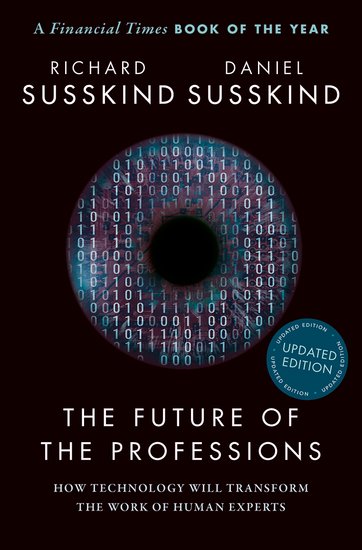

Figure: The Future of Professions (Susskind and Susskind, 2015) is a 2015 book focussed on how the next wave of technology revolution is going to effect the professions.
Richard and Daniel Susskind’s 2015 book foresaw that the next wave of automation, artificial intelligence, would have an effect on professional work, information work. And that looks likely to be the case. But professionals are typically well educated and can adapt to changes in their circumstances. For example stocks have already been revolutioniswd by algorithmic trading, businesses and individuals have adapted to those changes.
Intellectual Debt
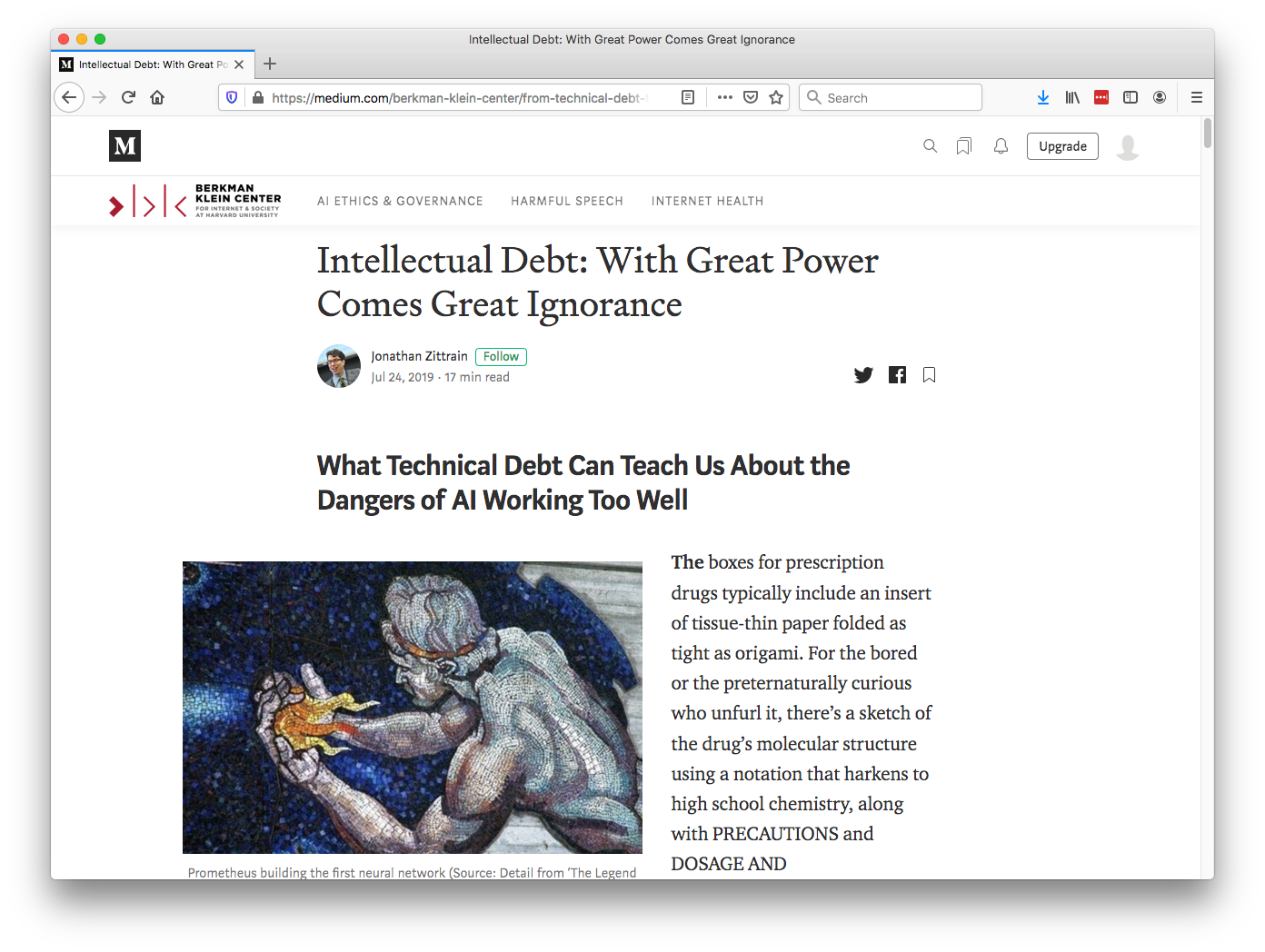

Figure: Jonathan Zittrain’s term to describe the challenges of explanation that come with AI is Intellectual Debt.
In the context of machine learning and complex systems, Jonathan Zittrain has coined the term “Intellectual Debt” to describe the challenge of understanding what you’ve created. In the ML@CL group we’ve been foucssing on developing the notion of a data-oriented architecture to deal with intellectual debt (Cabrera et al., 2023).
Zittrain points out the challenge around the lack of interpretability of individual ML models as the origin of intellectual debt. In machine learning I refer to work in this area as fairness, interpretability and transparency or FIT models. To an extent I agree with Zittrain, but if we understand the context and purpose of the decision making, I believe this is readily put right by the correct monitoring and retraining regime around the model. A concept I refer to as “progression testing”. Indeed, the best teams do this at the moment, and their failure to do it feels more of a matter of technical debt rather than intellectual, because arguably it is a maintenance task rather than an explanation task. After all, we have good statistical tools for interpreting individual models and decisions when we have the context. We can linearise around the operating point, we can perform counterfactual tests on the model. We can build empirical validation sets that explore fairness or accuracy of the model.
See Lawrence (2024) intellectual debt p. 84, 85, 349, 365.
Technical Debt
In computer systems the concept of technical debt has been surfaced by authors including Sculley et al. (2015). It is an important concept, that I think is somewhat hidden from the academic community, because it is a phenomenon that occurs when a computer software system is deployed.
Separation of Concerns
To construct such complex systems an approach known as “separation of concerns” has been developed. The idea is that you architect your system, which consists of a large-scale complex task, into a set of simpler tasks. Each of these tasks is separately implemented. This is known as the decomposition of the task.
This is where Jonathan Zittrain’s beautifully named term “intellectual debt” rises to the fore. Separation of concerns enables the construction of a complex system. But who is concerned with the overall system?
Technical debt is the inability to maintain your complex software system.
Intellectual debt is the inability to explain your software system.
It is right there in our approach to software engineering. “Separation of concerns” means no one is concerned about the overall system itself.
See Lawrence (2024) separation of concerns p. 84-85, 103, 109, 199, 284, 371.
See Lawrence (2024) intellectual debt p. 84-85, 349, 365, 376.
Coin Pusher
Disruption of society is like a coin pusher, it’s those who are already on the edge who are most likely to be effected by disruption.


Figure: A coin pusher is a game where coins are dropped into th etop of the machine, and they disrupt those on the existing steps. With any coin drop, many coins move, but it is those on the edge, who are often only indirectly effected, but also most traumatically effected by the change.
One danger of the current hype around ChatGPT is that we are overly focussing on the fact that it seems to have significant effect on professional jobs, people are naturally asking the question “what does it do for my role?”. No doubt, there will be disruption, but the coin pusher hypothesis suggests that that disruption will likely involve movement on the same step. However it is those on the edge already, who are often not working directly in the information economy, who often have less of a voice in the policy conversation who are likely to be most disrupted.
The Horizon Scandal
In the UK we saw these effects play out in the Horizon scandal: the accounting system of the national postal service was computerized by Fujitsu and first installed in 1999, but neither the Post Office nor Fujitsu were able to control the system they had deployed. When it went wrong individual sub postmasters were blamed for the systems’ errors. Over the next two decades they were prosecuted and jailed leaving lives ruined in the wake of the machine’s mistakes.
See Lawrence (2024) Horizon scandal p. 371.
The horizon example is an example of intellectual debt in practice, but one that didn’t involve artificial intelligence, just disempowered professions.
_ai/includes/intellectual-debt-short.md
The challenges of intellectual debt are now being propagated through wider society with the additional support of new large language model technologies.
The Sorcerer’s Apprentice
See this blog blog post on The Open Society and its AI.


Figure: A young sorcerer learns his masters spells, and deploys them to perform his chores, but can’t control the result.
In Goethe’s poem The Sorcerer’s Apprentice, a young sorcerer learns one of their master’s spells and deploys it to assist in his chores. Unfortunately, he cannot control it. The poem was popularised by Paul Dukas’s musical composition, in 1940 Disney used the composition in the film Fantasia. Mickey Mouse plays the role of the hapless apprentice who deploys the spell but cannot control the results.
When it comes to our software systems, the same thing is happening. The Harvard Law professor, Jonathan Zittrain calls the phenomenon intellectual debt. In intellectual debt, like the sorcerer’s apprentice, a software system is created but it cannot be explained or controlled by its creator. The phenomenon comes from the difficulty of building and maintaining large software systems: the complexity of the whole is too much for any individual to understand, so it is decomposed into parts. Each part is constructed by a smaller team. The approach is known as separation of concerns, but it has the unfortunate side effect that no individual understands how the whole system works. When this goes wrong, the effects can be devastating. We saw this in the recent Horizon scandal, where neither the Post Office or Fujitsu were able to control the accounting system they had deployed, and we saw it when Facebook’s systems were manipulated to spread misinformation in the 2016 US election.
In 2019 Mark Zuckerberg wrote an op-ed in the Washington Post calling for regulation of social media. He was repeating the realisation of Goethe’s apprentice, he had released a technology he couldn’t control. In Goethe’s poem, the master returns, “Besen, besen! Seid’s gewesen” he calls, and order is restored, but back in the real world the role of the master is played by Popper’s open society. Unfortunately, those institutions have been undermined by the very spell that these modern apprentices have cast. The book, the letter, the ledger, each of these has been supplanted in our modern information infrastructure by the computer. The modern scribes are software engineers, and their guilds are the big tech companies. Facebook’s motto was to “move fast and break things”. Their software engineers have done precisely that and the apprentice has robbed the master of his powers. This is a desperate situation, and it’s getting worse. The latest to reprise the apprentice’s role are Sam Altman and OpenAI who dream of “general intelligence” solutions to societal problems which OpenAI will develop, deploy, and control. Popper worried about the threat of totalitarianism to our open societies, today’s threat is a form of information totalitarianism which emerges from the way these companies undermine our institutions.
So, what to do? If we value the open society, we must expose these modern apprentices to scrutiny. Open development processes are critical here, Fujitsu would never have got away with their claims of system robustness for Horizon if the software they were using was open source. We also need to re-empower the professions, equipping them with the resources they need to have a critical understanding of these technologies. That involves redesigning the interface between these systems and the humans that empowers civil administrators to query how they are functioning. This is a mammoth task. But recent technological developments, such as code generation from large language models, offer a route to delivery.
The open society is characterised by institutions that collaborate with each otherin the pragmatic pursuit of solutions to social problems. The large tech companies that have thrived because of the open society are now putting that ecosystem in peril. For the open society to survive it needs to embrace open development practices that enable Popper’s piecemeal social engineers to come back together and chant “Besen, besen! Seid’s gewesen.” Before it is too late for the master to step in and deal with the mess the apprentice has made.
See Lawrence (2024) sorcerer’s apprentice p. 371-374.
The Open Society and its Enemies
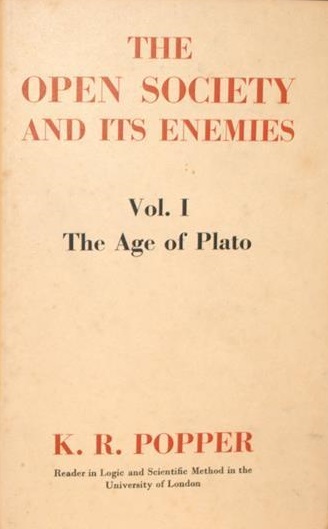

Figure: The Open Society and Its Enemies by Karl Popper views liberal democracies as a collection of “piecemeal social engineers” who strive towards better outcomes.
Popper opened the preface to his book (Popper, 1945) with the following words:
If in this book harsh words are spoken about some of the greatest among the intellectual leaders of mankind, my motive is not, I hope, to belittle them. It springs rather from my conviction that, if our civilization is to survive, we must break with the habit of deference to great men. Great men may make great mistakes; and as the book tries to show, some of the greatest leaders of the past supported the perennial attack on freedom and reason.
He had written the book against the background of the second world war, his decision to write it taken on the day the Nazis invaded Austria in March 1938. His book is a reaction to totalitarianism.
For Popper, the ideas of “great men” become totalitarian when imposed on society. He advocates for direct liberal democracy as the only form of government that can allow for institutional change without bloodshed. The open society is one characterized by institutions and individuals that can engage in the practical pursuit of solutions to social and political problems. The institutions are also underpinned by individuals: lawyers, accountants, civil administrators and many more. To Popper it is these “piecemeal social engineers” who offer pragmatic solutions to our society’s political and social challenges.
See Lawrence (2024) Popper, Karl The Open Society and its Enemies p. 371–374.
Networked Interactions
Our modern society intertwines the machine with human interactions. The key question is who has control over these interfaces between humans and machines.

Figure: Humans and computers interacting should be a major focus of our research and engineering efforts.
So the real challenge that we face for society is understanding which systemic interventions will encourage the right interactions between the humans and the machine at all of these interfaces.
The Structure of Scientific Revolutions
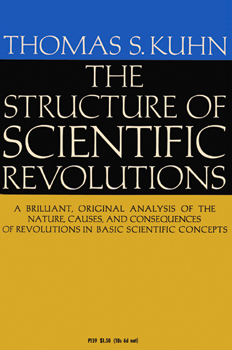

Figure: The Structure of Scientific Revolutions by Thomas S. Kuhn suggests scientific paradigms are recorded in books.
Kuhn was a historian of science and a philosopher who suggested that the sociology of science has two principal components to it. His idea is that “normal science” operates within a paradigm That paradigm is defined by books which encode our best understanding. An example of a paradigm is Newtonian mechanics, or another example would be the geocentric view of the Universe. Within a paradigm normal science proceeds by scientists solving the “puzzles” that paradigm sets. A paradigm shift is when the paradigm changes, for example the Corpernican revolution or the introduction of relativity.
The notion of a paradigm shift has also entered common parlance, this reflects the idea that wider human knowledge is also shared and stored, less ormally than scientific knowledge, but still with a dependence on our information infrastructure.
suggests that
The MONIAC
The MONIAC was an analogue computer designed to simulate the UK economy. Analogue comptuers work through analogy, the analogy in the MONIAC is that both money and water flow. The MONIAC exploits this through a system of tanks, pipes, valves and floats that represent the flow of money through the UK economy. Water flowed from the treasury tank at the top of the model to other tanks representing government spending, such as health and education. The machine was initially designed for teaching support but was also found to be a useful economic simulator. Several were built and today you can see the original at Leeds Business School, there is also one in the London Science Museum and one in the Unisversity of Cambridge’s economics faculty.
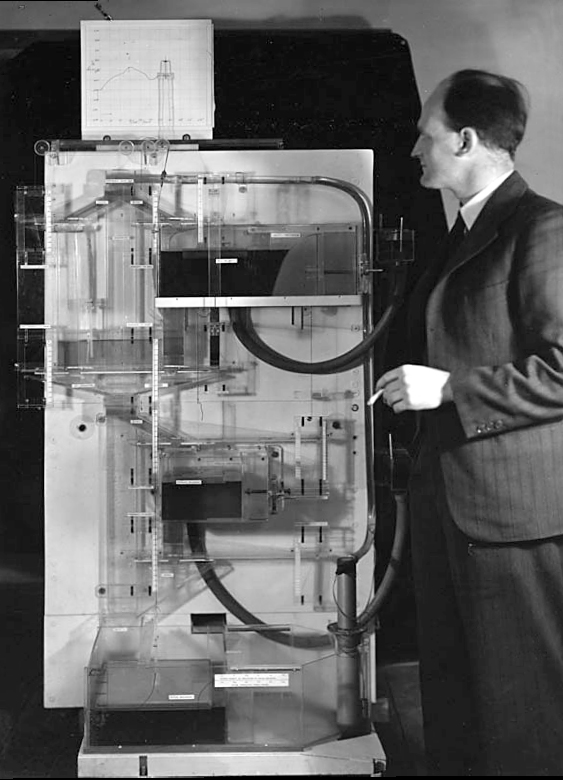

Figure: Bill Phillips and his MONIAC (completed in 1949). The machine is an analogue computer designed to simulate the workings of the UK economy.
See Lawrence (2024) MONIAC p. 232-233, 266, 343.
HAM

Figure: The trinity of human, data, and computer, and highlights the modern phenomenon. The communication channel between computer and data now has an extremely high bandwidth. The channel between human and computer and the channel between data and human is narrow. New direction of information flow, information is reaching us mediated by the computer. The focus on classical statistics reflected the importance of the direct communication between human and data. The modern challenges of data science emerge when that relationship is being mediated by the machine.

Figure: The HAM now sits between us and the traditional digital computer.
See Lawrence (2024) human-analogue machine (HAMs) p. 343-347, 359-359, 365-368.

Figure:
A Question of Trust
In Baroness Onora O’Neill’s Reeith Lectures from 2002, she raises the challenge of trust. There are many aspects to her arcuments, but one of the key points she makes is that we cannot trust without the notion of duty. O’Neill is bemoaning the substitution of duty with process. The idea is that processes and transparency are supposed to hold us to account by measuring outcomes. But these processes themselves overwhelm decision makers and undermine their professional duty to deliver the right outcome.


Figure: A Question of Trust by Onora O’Neil which examines the nature of trust and its role in society.
Again Univesities are to treat each applicant fairly on the basis of ability and promise, but they are supposed also to admit a socially more representative intake.
There’s no guarantee that the process meets the target.
Onora O’Neill A Question of Trust: Called to Account Reith Lectures 2002 O’Neill (2002)]
O’Neill is speaking in 2002, in the early days of the internet and before social media. Much of her thoughts are even more relevant for today than they were when she spoke. This is because the increased availability of information and machine driven decision-making makes the mistaken premise, that process is an adequate substitute for duty, more apparently plausible. But this undermines what O’Neill calls “intelligent accountability”, which is not accounting by the numbers, but through professional education and institutional safeguards.
Conclusions
While it appears that Generative AI is the revolution, really it is just the latest manifestation of the information revolution. The effect where we are now dominated by the computer in its information processing capabilities.
These new capabilities offer both benefits and pitfalls in terms of how they will steer the information revolution. Danger that these solutions are being designed centrally for the convenience of the developer not the depployer.
Devolved autonomy presents a difficult balance with individual’s contextual awareness being important in robust decision making and for consequential desisions human-in-the-loop remaining vital. (See case studies)
Danger for businesses in losing the notion of intelligent accountability which renders the human value of their business a function of their processes.
Thanks!
For more information on these subjects and more you might want to check the following resources.
- book: The Atomic Human
- twitter: @lawrennd
- podcast: The Talking Machines
- newspaper: Guardian Profile Page
- blog: http://inverseprobability.com

